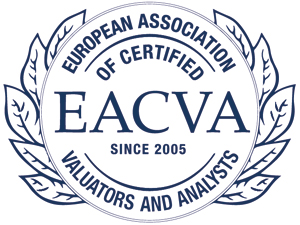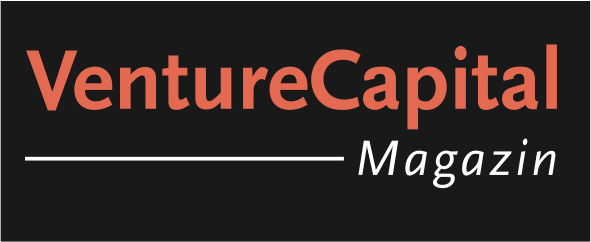RESEARCH PAPERS | M & A
Cross-Border M&A
CROSS-BORDER M&A FLOWS, ECONOMIC GROWTH, AND FOREIGN EXCHANGE RATES
Steven Riddiough, and Huizhong Zhang
2025
We extract information about future economic conditions from firms' cross-border merger and acquisition announcements, and show it predicts changes in relative economic growth rates and foreign exchange rate returns. We find the predictability is driven by the acquisition decisions of domestic firms, which signal turning points in local economic growth. The findings are motivated via a simple model of exchange rate determination with heterogeneous expectations and support the theorized relationship between foreign exchange rates and macroeconomic fundamentals. The results provide new tools for policy makers seeking to predict economic activity and offer global investors a novel source of portfolio diversification. >more
Social Media
CAN SOCIAL MEDIA INFORM CORPORATE DECISIONS? EVIDENCE FROM MERGER WITHDRAWALS
J. Anthony Cookson, Marina Niessner, and Christoph Schiller
2025
This paper studies whether social media sentiment predicts merger withdrawals. We find that a standard deviation increase in social media sentiment after a merger announcement is associated with a 0.64 percentage points lower probability of withdrawal (16.6% of the average). This effect is unexplained by abnormal price reactions, traditional news, and analyst recommendations. Consistent with manager learning, the informativeness of social media strengthens after firms start corporate Twitter accounts. The informativeness is driven by longer acquisition related tweets by fundamental investors, rather than memes and price trend tweets. These findings suggest that social media signals can be important for corporate decisions. >more
Non-Compete Agreements
NON-COMPETE AGREEMENTS AND THE MARKET FOR CORPORATE CONTROL
Andrey Golubov, and Yuanqing (Lorna) Zhong
2024
Non-compete agreements (NCAs) limit outside employment options and, therefore, increase personal costs of job displacement for managers. Using state-level changes in NCA enforceability as a natural experiment, we find that managers are more averse to horizontal takeovers when NCA enforcement tightens. In particular, higher enforceability is associated with fewer same-industry takeovers. Those that do materialize are more likely to be hostile, involve higher premiums, and are less likely to complete. Overall, the findings indicate that the use of NCAs and their enforceability have important implications for the market for corporate control and that banning NCAs could actually promote consolidation. >more
Divestitures
SUSTAINABILITY OR GREENWASHING: EVIDENCE FROM THE ASSET MARKET FOR INDUSTRIAL POLLUTION
Ran Duchin, Janet Gao, and Qiping Xu
2024
We study the asset market for pollutive plants. Firms divest pollutive plants in response to environmental pressures. The buyers are firms facing weaker environmental pressures, with supply chain relationships or joint ventures with the sellers. While pollution levels do not decline following divestitures, the sellers highlight their sustainable policies in subsequent conference calls, earn higher returns as they sell more pollutive plants, and benefit from higher ESG ratings and lower compliance costs. Overall, the asset market allows firms to redraw their boundaries in a manner perceived as environmentally friendly without real consequences for pollution and with substantial gains from trade. >more
Growth-Promoting Bonuses
GROWTH-PROMOTING BONUSES AND MERGERS AND ACQUISITIONS
Growth-Promoting Bonuses and Mergers and Acquisitions
Tor-Erik Bakke, Mathias Kronlund, Hamed Mahmudi, and Aazam Virani
2024
One-third of U.S. top executives have bonus incentives that are explicitly tied to the firm's size. We study how such "growth-promoting bonuses" influence firms' mergers and acquisitions (M&A) activities. We find that firms with bonus structures that promote growth are more prone to make acquisitions—especially acquisitions of a scale that help meet the bonus size target. We use shocks to sales from plausibly exogenous exchange-rate changes for exporting firms to identify these effects. Acquisitions by firms with growth-promoting bonuses have significantly lower abnormal returns, destroying value for the acquirers on average. These lower acquirer returns can be attributed to the selection of targets with lower synergies and, to a lesser extent, higher premiums paid. The growth-promoting bonuses tend to be sufficiently large such that—despite negative acquirer returns—the net monetary effect for executives who meet their sales bonus targets with a merger remains significantly positive. >more
Sentiment
LARGE LANGUAGE MODELS AND M&A: CAN CHATGPT HELP FORECAST M&A ACTIVITY?
Dominik Degen, Jens Kengelbach, Daniel Kim, Soenke Sievers, and Yiran Wang
2024
This paper employs ChatGPT on firms' earnings conference calls transcripts to extract managers' so far private information regarding their sentiment and expectations concerning (future) mergers and acquisitions (M&A) activity. We aggregate these firm-level scores to a market wide ChatGPTbased M&A sentiment score (MASS) and successfully perform various construct validity checks including employing M&A experts and back testing. Our main results suggest that M&A sentiment has strong forecasting power for future M&A activity and adds additional explanatory power to established sentiment indices and fundamental drivers. The predictability holds for both in-sample and out-of-sample tests. Overall, our novel index will be useful to further understand M&A patterns, to predict future M&A activity, and for practitioners to evaluate and benchmark their own M&A activities. >more
Board Reforms
GLOBAL BOARD REFORMS AND CORPORATE ACQUISITION PERFORMANCE
Thomas Y. To, Eliza Wu, and Diya Zhao
2024
This paper examines the effect of board reforms on corporate acquisition performance using data from 31 countries. Using a difference-indifferences design, we find that the implementation of board reforms in the acquirer's country significantly increases acquirer returns. The increase is driven by reforms involving board independence, but not reforms involving audit committee independence nor the separation of CEO and board chair roles. Further analysis shows that the uplift in acquisition performance following improvements in board independence is strongest in acquirers with more agency problems. The effect is concentrated in larger acquirers, with more free cash flows, executing large and public-target deals and operating in countries with ex-ante poor investor protection. The empirical evidence indicates that reforming board independence effectively alleviates agency problems between managers and shareholders and improves corporate acquisition performance. >more
Liquidity
LIQUID STOCK AS AN ACQUISITION CURRENCY
Sheng Huang, Johan Maharjan, and Vikram K. Nanda
2024
We examine how stock liquidity affects acquisitions. We hypothesize that liquidity enhances acquirer stock as an acquisition currency, especially when the target is relatively less liquid. As hypothesized, we find that more liquid firms have a greater likelihood of making stock acquisitions. Further, the difference in stock liquidity between acquirer and target firms increases payment with stock, reduces acquisition premiums, and improves acquirer announcement returns in equity deals. Consequently, firms take steps to improve stock liquidity prior to stock acquisitions. We use policy initiatives as exogenous shocks to firm liquidity to show that liquidity effects on acquisitions are plausibly causal. >more
Homophily
HOMOPHILY AND MERGER DYNAMICS
Stefano Bonini, and Meghana Vaidya
2024
We propose a novel multifactor metric of homophily between the CEOs of the acquirer and target firms as a causal determinant of mergers and acquisitions. We find strong evidence that higher homophily among the two CEOs increases the likelihood of M&A deal initiation and completion. When homophily is high, deals are more likely to be paid in cash, exhibit significantly larger long-term value creation and are less subject to ex-ante overpricing as measured by ex-post goodwill write-offs. These effect stem from similarity between CEOs creating trust, reducing information asymmetry and facilitating effective communication. Our approach resolves prior conflicting results on the effect of homophily on large corporate decisions and strongly indicates the need for a multidimensional estimation of homophily to obtain conclusive results. >more
Real Effects
IDENTIFYING THE REAL EFFECTS OF THE M&A MARKET ON TARGET FIRMS
Elizabeth Berger, David De Angelis, and Gustavo Grullon
2023
This paper provides causal evidence of the effects of the M&A market on target firms' corporate policies. Using antitrust regulatory thresholds to link the probability of a takeover to the size of the firm, we find evidence that firms intentionally reduce their size to elicit a takeover bid. They do so by limiting asset growth and increasing their payouts when they have excess cash. The treatment effect is stronger among firms with greater control over their market value and incentives to cash out via a merger. Our results reveal that antitrust exemptions can create perverse incentives that limit growth. >more
Selling Mechanism
NEGOTIATION, AUCTION, OR NEGOTIAUCTION?! EVIDENCE FROM THE FIELD
Tingting Liu, Micah S. Officer, and Danni Tu
2023
We bridge theoretical negotiation and auction literature with real-world practice using a rich, hand-collected bid-level dataset covering high-stakes merger negotiations totaling nearly $5 trillion. Notably, full-scale private auctions are not common in selling firms, and many deals starting as auctions switch to negotiations with a single buyer at a later stage. The process often shifts, highlighting the fluid nature. Initiating bidders typically value the target higher and become the eventual winning bidders. Negotiations take about two-to-four months, involving two-to-six offers, with delays related to information asymmetry and valuation uncertainty. Interestingly, final premiums remain similar regardless of bid frequency. About 44% of targets counteroffer, usually settling at a midpoint between their and the bidder’s price. Our findings call for further developments in theories that consider the inherent interconnectedness between auctions and negotiations in real-world scenarios. >more
Maturity Overhang
MATURITY OVERHANG: EVIDENCE FROM M&A
Zhiyao Chen, Dirk Hackbarth, Jarrad Harford, and Yuxin Luo
2023
In the context of mergers and acquisitions, this paper analyzes a maturity overhang problem that is due to shorter debt maturities creating higher rollover risk. Using bond transaction data, we develop a market-based measure of rollover risk and find that i) rollover risk dampens merger activities at the firm and aggregate levels; ii) acquirers facing higher rollover risk are more sensitive to changes in cash reserves and prefer equity as a payment method over cash; and iii) positive market reactions to cash payment are observed only when firms have low rollover risk. To shed light on our empirical findings, we study a dynamic investment model that underscores the importance of precautionary savings and rollover risk for maturity overhang. >more
Cross-Border
CROSS-BORDER MERGERS AND DIFFERENCES IN CORPORATE GOVERNANCE
Laura T. Starks, and Kelsey D. Wei
2023
We examine whether corporate governance differences affect firm valuation in cross-border mergers. We find that takeover premiums are decreasing in the quality of the foreign acquirer’s home country governance for deals completed with stock, suggesting that the acquirers compensate target shareholders for the resulting exposure to inferior corporate governance regimes. Correspondingly, we find that the acquiring firm stockholders’ abnormal returns at the merger announcement are increasing in the quality of corporate governance for stock offers. Finally, we find that foreign acquirers from countries with better corporate governance are more likely to make stock offers. >more
Serial Acquirers
SOLVING SERIAL ACQUIRER PUZZLES
Antonio J. Macias, P. Raghavendra Rau, and Aris Stouraitis
2023
Using a novel typology of serial acquirers, we examine several puzzles documented in prior literature. We show that acquisitions by different types of acquirers are driven by different factors, they acquire different sizes of targets, and subsequent acquisitions by acquirers are predictable ex ante. Controlling for market anticipation, the most frequent serial acquirers do not earn declining returns as they continue acquiring, while less frequent acquirers do. Our methodology enhances our understanding of serial acquisition dynamics, anticipation, and economic value adjustments. The methodology is likely to be relevant to topics related to event anticipation beyond those covered in this study. >more
Cross-Border Deals
CROSS-BORDER MERGERS AND ACQUISITIONS
Isil Erel, Yeejin Jang, and Michael S. Weisbach
2023
One of the most consequential events in any firm’s lifetime is a major acquisition. Because of their importance, mergers and acquisitions (M&As) have been an enormous area of research. However, the vast majority of this research and survey papers summarizing this research have focused on domestic deals. Cross-border ones, however, constitute about 30% of the total number and 37% of the total volume of M&As around the world since the early 1990s. We survey the literature on cross-border M&As, focusing on international factors that can lead firms to acquire a firm in another country. Such factors include differences in economic development, laws, institutions, culture, labor rights, protection of intellectual property, taxes, and corporate governance. >more
Financial Disclosure
MANDATORY FINANCIAL DISCLOSURE AND M&A ACTIVITY
Marcelo Ortiz M., Caspar David Peter, Francisco Urzúa I., and Paolo F. Volpin
2023
Taking advantage of the implementation of the 2003 European Commission (EC) directive on financial reporting, we explore the impact of mandatory financial disclosure on mergers and acquisitions (M&A). We find robust evidence that the number (and volume) of private firms becoming an M&A target increases with mandatory disclosure. The analyses of cross-industry differences, deal-level data, and post-deal performance indicate that financial disclosure increases M&A activity by reducing information frictions in the market for corporate control. >more
Return Premia
TAKING OVER THE SIZE EFFECT: ASSET PRICING IMPLICATIONS OF MERGER ACTIVITY
Sara Easterwood, Jeffry M. Netter, Bradley S. Paye, and Mike Stegemoller
2023
We show that merger announcement returns account for virtually all of the measured size premium. An empirical proxy for ex ante takeover exposure positively and robustly relates to cross-sectional expected returns. The relation between size and expected returns becomes positive or insignificant, rather than negative, conditional on this takeover characteristic. Asset pricing models that include a factor based on the takeover characteristic outperform otherwise similar models that include the conventional size factor. We conclude that the takeover factor should replace the conventional size factor in benchmark asset pricing models. >more
Peer Group Selection
NEGLECTED PEERS IN MERGER VALUATIONS
Feng Guo, Tingting Liu, and Danni Tu
2022
Using novel merger valuation data, we show that firms selected by investment banks as “comparable peers” are more than twice as likely later to become takeover targets themselves compared to matched control firms. Peer firms not subsequently acquired attract more institutional ownership and analyst coverage, deliver strong operating performance, reduce investments, and increase payouts. Investors are inattentive, though, to peer identification at the time of merger filings’ public disclosure. A portfolio that longs peers and shorts controls earns up to 15.6% alpha annually, which mainly comes from the long leg and is difficult to explain by short-sale constraints. >more
Financial Advisors
DO FINANCIAL ADVISORS MATTER FOR M&A PRE-ANNOUNCEMENT RETURNS?
André Betzer, Jasmin Gider, and Peter Limbach
2022
This study documents economically meaningful and persistent financial advisor fixed effects in target firms' abnormal stock returns shortly prior to takeover announcements. Additional difference-in-differences analyses suggest that advisors are associated with lower pre-bid stock returns after their senior staff were defendants in SEC insider trading enforcement actions. Returns are higher for advisors with more previously advised deals and those located in NYC. The evidence helps explain the prevalent phenomenon of pre-bid stock returns. It contributes to the inconclusive literature on banks' exploitation of private information gained via advisory services, which is limited to disclosed, traceable activities indicative of information leakage. >more
Credit Conditions
CREDIT MARKET DRIVEN ACQUISITIONS
Huseyin Gulen, Candace Jens, and Stefano Rossi
2022
Using a comprehensive sample of takeovers from 1983 to 2016, we show that credit market conditions drive takeover activity. A deterioration in the aggregate credit quality of corporate bond issuers is associated with a large increase in aggregate deal value for all takeovers, and the strongest effects are for all cash deals. When credit spreads are low in quarter t, junk bonds are disproportionately issued and aggregate credit quality deteriorates; debt-financed takeovers increase from quarter t+2, peak at quarter t+5, and subsequently subside as credit spreads widen. At the firm-level, buoyant credit market conditions are associated with an increase in debt-financed takeover activity, particularly when acquiring managers are overconfident. Our results are consistent with the hypothesis that buoyant credit market conditions and managerial overconfidence coexist in credit market driven acquisitions. >more
Trust During Negotiations
DOES BILATERAL TRUST MATTER DURING M&A NEGOTIATIONS?
Muhammad Farooq Ahmad, Nihat Aktas, and Saqib Aziz
2022
We examine the effect of bilateral trust on cross-border M&As. Using a large European M&A sample, we find that bilateral trust facilitates deal initiation and completion. Bidder and target bilateral trusts towards each other are equally important for deal initiation, but only bidder trust towards the target firm matters for deal completion. Moreover, the role of bilateral trust on deal completion increases in more complex and riskier transactions or with lower cross-border M&A experience. These results support the importance of bilateral trust as deal facilitator in negotiation settings characterized with liability of foreignness, contract incompleteness, and weak regulation. >more
Disclosure
MANDATORY FINANCIAL DISCLOSURE AND M&A ACTIVITY
Marcelo Ortiz M., Caspar David Peter, Francisco Urzúa I., and Paolo F. Volpin
2022
Taking advantage of the implementation of the European Commission directives on the financial reporting of private firms, we explore the impact of mandatory financial disclosure on mergers and acquisitions. We find robust evidence that the volume of private firms becoming the target in M&A deals is positively correlated with mandatory disclosure. The analyses of deal characteristics and post-deal performance confirm our interpretation that financial disclosure increases M&A activity by reducing asymmetric information and uncertainty. >more
Impact of Social Media
CAN SOCIAL MEDIA INFORM CORPORATE DECISIONS? EVIDENCE FROM MERGER WITHDRAWALS
J. Anthony Cookson, Marina Niessner, and Christoph Schiller
2022
This paper examines the role of social media in informing corporate decision-making by studying the decision of firm management to withdraw an announced merger. A standard deviation decline in abnormal social media sentiment following a merger announcement predicts a 0.73 percentage point increase in the likelihood of merger withdrawal (18.9% of the baseline rate). The informativeness of social media for merger withdrawals is not explained by abnormal price reactions or news sentiment, and in fact, it is stronger when these other signals disagree. Consistent with learning from external information, we find that the social media signal is most informative for complex mergers in which analyst conference calls take a negative tone, driven by the Q&A portion of the call. Overall, these findings imply that social media is not a sideshow, but an important aspect of firm information environment. >more
Strategic Similarity
STRATEGIC SIMILARITY IN MERGERS AND ACQUISITIONS
Tina Oreski
2021
Using textual analysis and the firm life-cycle theory to proxy for a company's competitive strategy, this paper empirically examines the strategic similarity hypothesis. The findings show that mergers and acquisitions deals are more likely between companies implementing the same strategy. Moreover, same strategy deals yield higher announcement returns, asset and sales growth. The effect is more pronounced in a highly competitive environment and within an industry, confirming that strategic misalignment acts as a constraint to the merged company's optimal response to investment opportunities and market threats. Overall, the results reveal that synergies obtained from the overlapping strategies constitute an important determinant of public mergers and acquisitions. >more
Employee Health
HOW DO ACQUISITIONS AFFECT THE MENTAL HEALTH OF EMPLOYEES?
Laurent Bach, Ramin Baghai, Marieke Bos, and Rui Silva
2021
Using employer-employee level data linked to individual health records, we document that the incidence of stress, anxiety, depression, psychiatric medication usage, and even suicide increase following acquisitions. These effects are prevalent among employees from both targets and acquirers, in weak as well as in growing, profitable firms. Employees who experience negative career developments within the merging firms, 'blue-collar' workers, and employees with lower cognitive and non-cognitive skills are most affected. A variety of tests address endogeneity concerns, including an analysis exploiting failed mergers. Our findings point to mental illness as a significant non-pecuniary cost of acquisitions. >more
Investment Banks
BIG FISH IN SMALL PONDS: HUMAN CAPITAL MIGRATION AND THE RISE OF BOUTIQUE BANKS
Janet Gao, Wenyu Wang, and Xiaoyun Yu
2021
We study the comparative advantage of focused and multidivisional organizational forms at attracting valuable human capital. Using the M&A advisory industry as a laboratory, we show that high-performing individuals are more likely to migrate to boutique (focused) banks, particularly when facing cross-subsidization inside bulge bracket (multidivisional) banks, proxied by poor performance of their non-M&A departments. Such skilled labor migration improves the performance of boutique banks, potentially contributing to the rise of boutiques over the past two decades. Moreover, M&A deal outcomes differ when having boutique advisors. Our findings suggest corporate organizational structure and labor migration can jointly shape industry dynamics. >more













